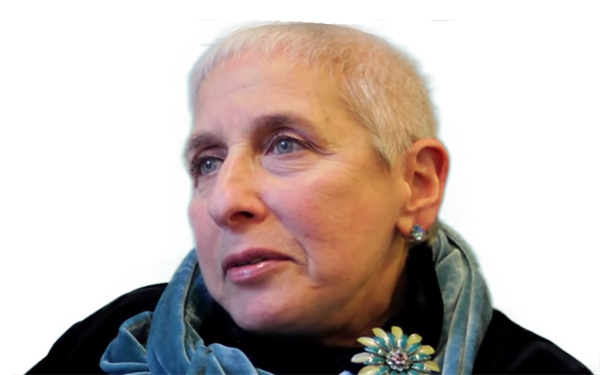Boston, Mass.
As part of my fellowship to write about top charter schools, I try to visit some “little guys,” school startups that range from a single school to a handful. Always, I look for their secret sauce.
Surprisingly, I often come up with the same answer.
Take Shantelle Wright for example. She runs Achievement Prep Network in Washington D.C.’s toughest neighborhood. Her students achieve at rates never thought possible for 8th Ward kids.
When I asked Wright how she could launch a school that was successful from day one, she started talking about a Boston-based fellowship, Building Excellent Schools (BES) that walked her through every step. I had never heard of them.
While in Denver one snowy day I ventured out to visit University Prep, a single school that’s new on the block – and successful from day one. Founder David Singer wasn’t around that day, but when I tracked him down and asked for his history, Singer told me he’s a former BES Fellow.
Not long after I visited Ravi Gupta in Nashville. I wanted to see his tech-oriented schools in that city’s poorest neighborhoods. Gupta’s Re-Public schools have become famous for teaching coding skills to every child.
As Gupta drove me around Nashville to visit his schools I asked for his history. Again, Building Excellent Schools.
Who are these guys?
That’s how I ended up recently in Boston, where visiting these guys turned out to be more “these women,” led by Linda Brown, an undeniable force in the movement to create high-performing charter schools.

Linda Brown, founder and executive director of Building Excellent Schools, and David Singer, founder of University Preparatory School in Denver, Colo., at a June gathering of charter school leaders at BES’ headquarters in Boston, Massachusetters. (Photo courtesy of
Building Excellent Schools)
Working out of offices in Boston’s financial district, BES seeks to train roughly a dozen fellows a year, all aspiring charter school leaders. The fellows observe some of the best charters in the country, which helps them design their own schools. They also get help writing their first charter proposal and further help in finding funding.
As of this past year, there were 79 charter schools launched by BES, with the first dating back to 2003. This coming school year, that number jumps to 102, a mix of new launches and expansions of existing school organizations.
What BES does appears to be unique. Another group, the Charter Accelerator Network, which is run by three large charter groups, helps small charter groups grow large.
BES, by contrast, helps entrepreneurs launch that incredibly difficult first school. The biggest funder behind BES is the Walton Family Foundation — the Walton Family Foundation also funds The Seventy Four and numerous other education-focused initiatives — but there are about two dozen
other foundations backing BES as well.
A decisive matriarch prepares to step down
Brown seems like an unlikely candidate to run BES. First, she has never run her own charter school. Second, a visitor is struck by her grandmotherly appearance, complete with a cane. But she talks through piercing eyes, wielding a photographic memory, and is always quick with the verbal jab.
Get lazy around Linda Brown and you’ll find yourself skewered. Just to look at her, you’d find the news of her plan to step down as executive director (the search for her replacement is under way) understandable. To listen to her, however, it becomes hard to believe. Doesn’t she have years left doing this work?
Brown formerly led a private school but wanted to target low-income minorities. She eventually settled on the charter movement as the vehicle to achieve that dream. Brown prizes herself as a quick-but-astute judge of character.
She has to be.
The investment BES puts into each fellow is enormous: About $250,000 just for the fellowship – one year of touring top charters and designing your own charter, a second year preparing to open a school. Some get startup grants from BES, which raises the stakes to $500,000 per fellow picked.
BES’s acceptance rate for its roughly dozen-a-year fellowships is less than 2 in 100, far lower that the world’s most selective universities.
Back to D.C.’s Shantelle Wright, who, like me, had never heard of BES until she was handed a brochure. Her reaction: You mean they pay you to do what I desperately want to do? Immediately, she threw herself into the application, finished it at 5 p.m. and pushed “send” while muttering a hopeful prayer.
Brown looked it over as soon as it arrived, and was floored. The essay was 13 pages long, single space. There was no white space, not even between the paragraphs.
“This essay was on fire,” said Brown. “She talked about how the vast black/white school achievement gap is not only a black person’s problem; this is also a white person’s problem: Why can’t we have decent schools east of the Anacostia (the poorest neighborhoods in the District)?”
The tone was more analytical than angry, but the passion was clear. Brown wanted a meeting.
At 7 a.m. the next morning, Brown phoned Wright at home. Says she woke her up: When can you be here?
Wright: When do you want me?
Brown: Can you be on the next shuttle to Boston?
Wright made the 9 a.m. shuttle and sat down with Brown for a long talk. At the end of the talk, she was offered a fellowship. That’s how Brown rolls. Today, Shantelle Wright sits on BES’ board of directors.
Sharing the secrets of charter success
I visited BES to observe a gathering of top charter leaders representing 18 schools in 15 cities that make up the BES Network, a selection of the highest-performing BES schools.
The goal is to talk to other charter pioneers about lessons learned and share, share and then share some more. To kick things into a higher gear, charter entrepreneurs from outside the BES network get invited. Their lesson: Here’s how to take your one or two schools and turn it up a notch.
The first morning session featured Bill Kurtz, founder of Denver’s highly successful DSST (Denver School of Science and Technology) school network. Only two weeks before this gathering, DSST won approval to open eight more schools, putting it on track to operate 22 schools in Denver by the school year 2024-25. The expansion would make
DSST the largest charter network in Denver and in Colorado — and, at 10,500 students, larger than most of the state’s school districts. Denver Public Schools currently enroll just under 90,000 students.
To the BES charter operators at this meeting, who run anywhere from one to a handful of schools, that’s a near-unimaginable leap. But that’s why Kurtz was here, to tell them how to make that happen.
The Kurtz lesson of the day, repeated several times: Whatever time you now spend to develop your management team, double it. You could see heads turning in the room, puzzled smiles exchanged. How in the world could we do that when we spend most of our day putting out fires?
Kurtz’s advice: Make it happen, or down the road you will pay a price. The management team you start a couple of schools with, he cautioned, may not be the management team you need to become the force that DSST has become in Denver.
Kurtz’s other advice: We at DSST have made more missteps than we can keep track of, and yet as a network of schools we’re very successful. How can that happen? Kurtz’s answer: Mistakes can be overcome as long as you always keep two values at the forefront.
First, be clear about the values of your network. If your people culture gets broken, said Kurtz, it doesn’t really matter how good a job you do rolling out a great curriculum. You will still fail.
Second, be very clear about performance expectations. Principals and teachers have to know the bar that needs reaching, and their passion about reaching that bar has to be enduring.
Other than that, he advised, take risks and don’t worry about mistakes. Around the room, I felt like there was a wave of ‘aha’ moments. This is why they came; this is why launching pads such as BES make such a difference. This is why charters that intensely copy one another’s success are revealing the secret sauce behind what it takes to successfully educate low-income, minority students.
The takeaways
Malka Borrego, founder, Equitas Academy, Los Angeles: During Borrego’s fellowship year it was the visit to Newark’s North Star Academy, part of the Uncommon Schools network, that most impressed her.
“I had taught elementary education but I had never seen kindergarten done that way, and I didn’t know you could hold kindergarten students to that expectation … I saw that you could ask kindergartners to stand in straight lines … I was really impressed with the idea that you can get kindergartners to read within three months, and by reading I mean the coding. Without maybe even a preschool experience they were able to have kids starting picking up their own books and reading on an independent level.”
From her observations at Boston’s Brooke Charter Schools, Borrego came away with an emphasis on instruction and curriculum. “Their school leaders dive deep and think about assessment, about how to organize learning in a way I hadn’t seen before.”
Brooke, which has an easy-going student culture, offers a sharp contrast with North Star, which has the strict culture associated with “no excuses” schools. Weighing the two, Borrego came down in the middle for Equitas.
David Singer, founder, University Preparatory School, Denver: Almost all the former fellows cited North Star as the charter school that left the most lasting impression – especially the high-energy student drum calls experienced during Community Circle, an event that can
be experienced on YouTube.
“You see kids from the grittiest parts of Newark loving life. It’s emotional. Here’s a group of kids getting a substantially different educational experience than any of their peers in the local setting. It highlights the inequity that exists in our urban core and just about everywhere in our nation.”
At University Prep, students do a near-mirror of the community circle Singer observed at North Star.
Singer also learned from Excel Academy, a Boston charter (also a BES school) that’s always on the visit list. From Excel, Singer borrowed its system for infusing school values into academics.
From Delaware’s Prestige Academy, an all-boys school, Singer watched founder Jack Perry move through the school looking for ways to keep students on track. “I saw him take so many young men aside as he walked through the school and trying to get them back on point. A quick private conversation, a quick check in the classroom…just these constant nudges, constant reminders that ‘You can do this, you will do this. I love you, so let’s go.’”
It was a lesson for how he should move about his own school.
Shara Hegde, founder, Cornerstone Academy Preparatory, San Jose: At Excel Academy, Hegde borrowed heavily from the “urgency” she saw in classroom transitions. To avoid wasting learning time, students were taught to move through the building in a tightly choreographed way, carrying exactly what they would need for the next class.
“At Cornerstone you’ll see kids lined up at each doorway with book boxes in their hands, their Chromebooks, all ready to go.”
At North Star, Hegde was impressed by the joy in learning she saw. “In some cases the kids were there for 12 hours. How do you make sure they continue to love being there?”
Those observations led to “go noodle” breaks at Cornerstone, where teachers set aside a couple of minutes for kids to shake and move as they shed their kid-wriggles. “They all have a good time, and are smiling. It may take a minute or two from instruction, but it’s worth it.”
Not every startup a success
Are Brown and the BES staff always successful in spinning off new charters? Not exactly. Their work is high risk, high reward. Ever watch the “Gold Rush” series on TV? Here’s the BES equivalent: You take someone you think is talented and set them up with a startup charter school that brings in students that test far below grade level. Then they try to catch those kids up on a budget that’s well below what traditional neighborhood schools are able to spend.
Sound easy?
Among the 79 schools launched by BES, six have been shuttered – flat-out failures. In Washington, D.C., for example, the BES-launched Septima Clark Public Charter School for Boys got shut down as a low-performer and folded into Wright’s co-ed Achievement Prep.
Shantelle Wright works with students in a reading intervention class at Achievement Prep Network, Washington, D.C. (Photo courtesy Achievement Prep Network, Washington, D.C.)
What happened? Sue Walsh, a senior director at BES, said Septima Clark was a well-designed school but there are certain qualities that are hard to predict in a potential school leader. Are they capable of hiring the right team? Can they execute on the details?
But then there are the successes. My definition of a high-performing charter is one where over time, for every year spent in that school, a child receives a year-and-a-half of instruction. Among the 79 BES schools, Brown estimates that about 50 meet that mark.
That record may not sound impressive, but consider what that statistic would look like in districts such as St. Louis, Detroit, Baltimore, New York or L.A. Unfortunately, schools serving high poverty students in those cities rarely reach that bar.
Which raises an interesting question: If most urban districts can’t create schools this successful, and charters are the best hope, why aren’t there more charter-launch organizations like BES?
Emerson Collective Fellow Richard Whitmire is the author of several education books
Get stories like these delivered straight to your inbox. Sign up for The 74 Newsletter




;)
